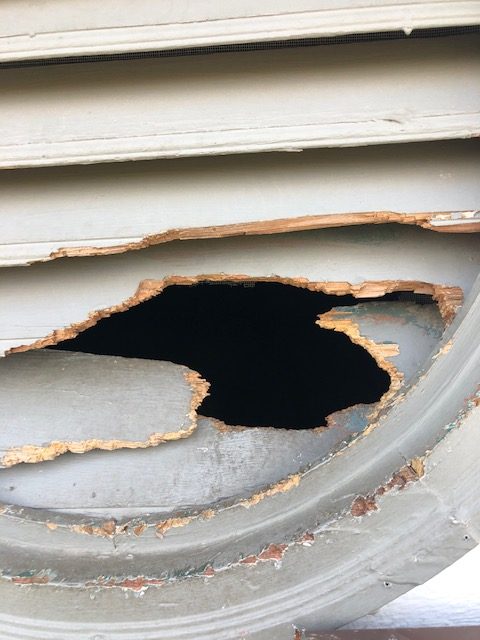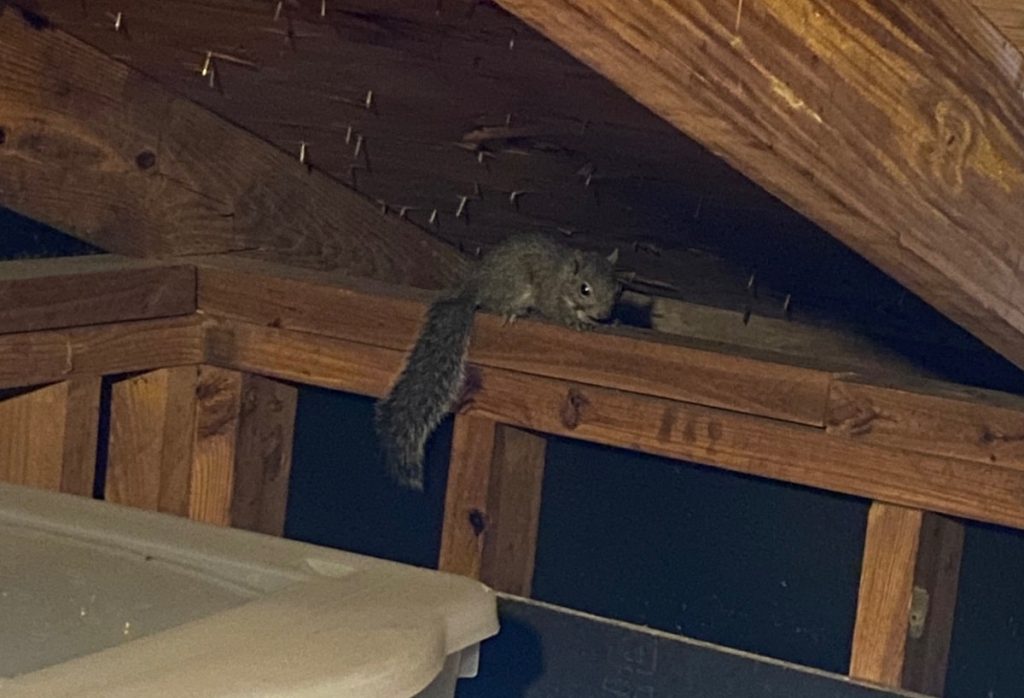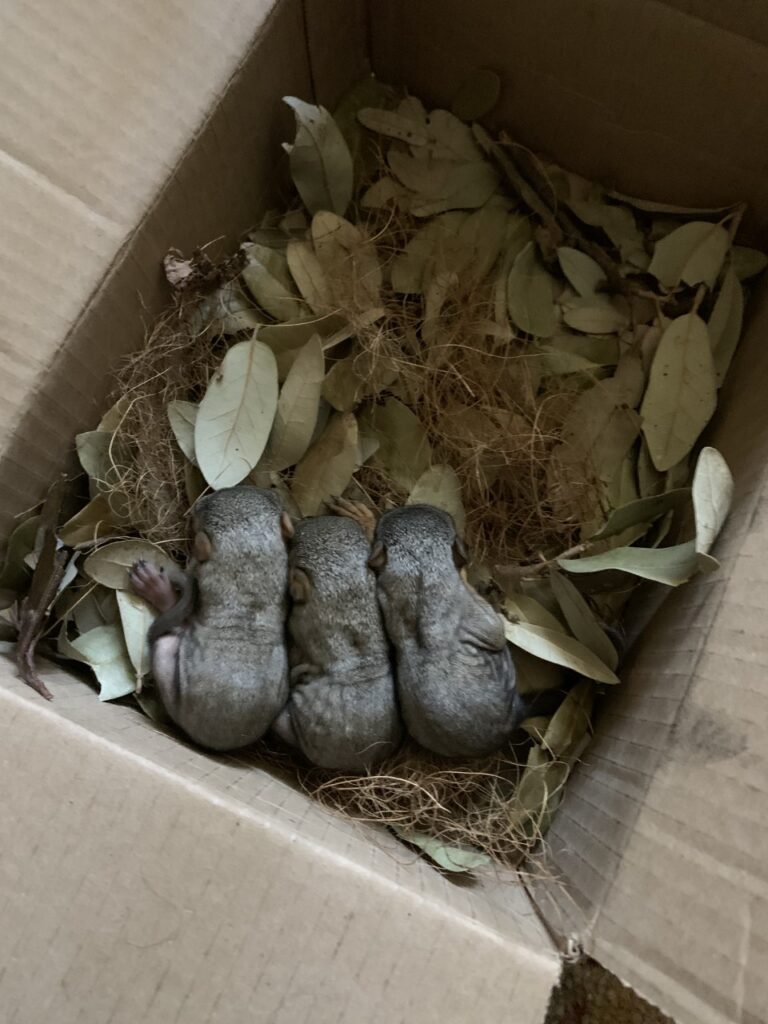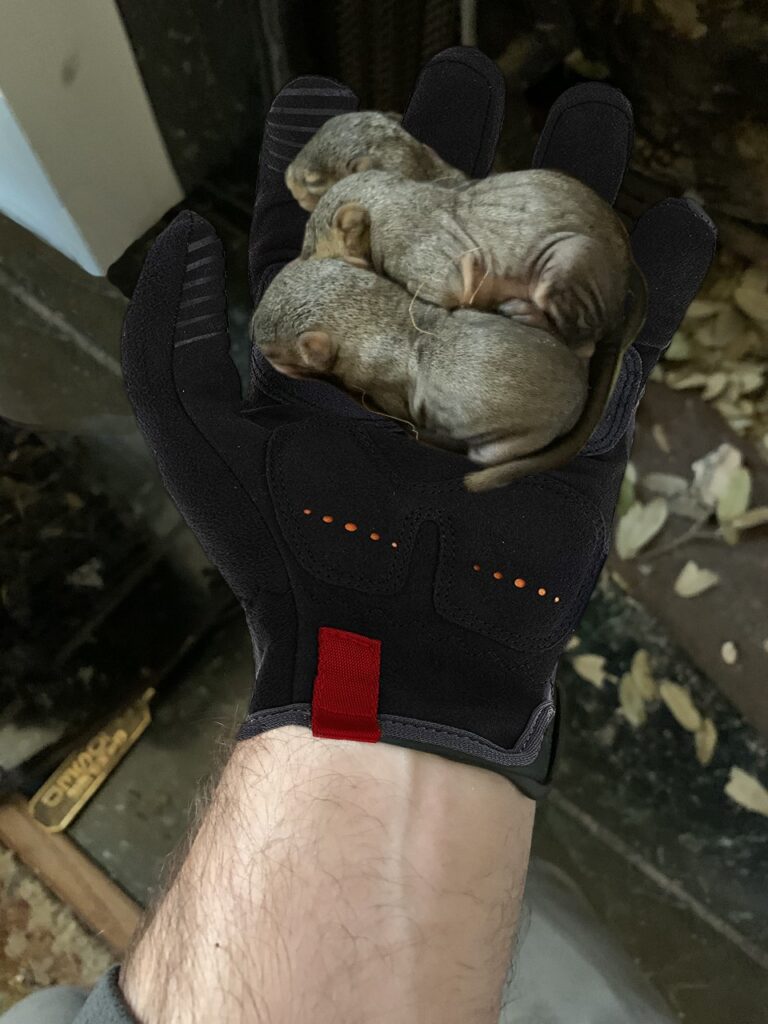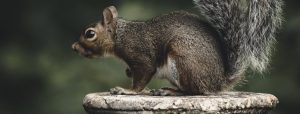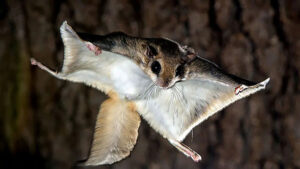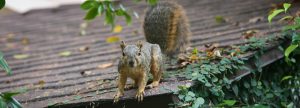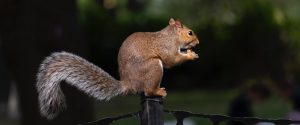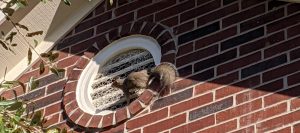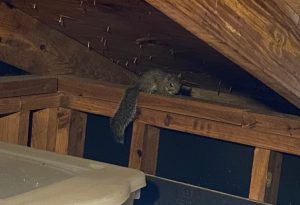Some of the more charming rodents we might come across on a daily basis, squirrels are bushy tailed rodents that are found in every state. Squirrels can be found year-round, though they are most active during the spring and summer months. Squirrels mate in late winter as well as in the spring/mid-summer, and their gestation period is about 4-6 weeks. Squirrels frequently nest in human structures to give birth to their young because they provide shelter and are almost always located near food sources.
Many DIYers do not realize how long the squirrel removal process can be. Successful squirrel control includes trapping, removing, relocating, locating entry points, exclusion repairs, cleaning, and disinfecting. Squirrels are rodents and therefore have many similarities to rats. In fact, having a squirrel or squirrel in your attic is comparable to having rats.
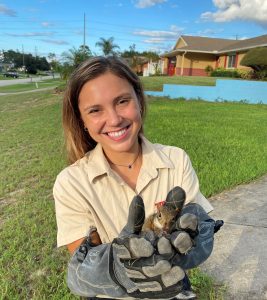
Did you know that squirrels are a great contributor to plant growth? Seeds are a major part of a squirrel’s diet, and because squirrels constantly bury and save their seeds, we benefit from seeds that are left uneaten. When a squirrel takes shelter in your home, those seeds end up inside insulation where they are unable to grow
Adrienne Vosseler Tweet
Table of Contents
What are the Signs of Squirrel Infestation?
Sounds. There’s a good chance you’ll hear a squirrel before you see any visual evidence, especially during winter months, where you’re less likely to notice exterior damage. The sounds squirrels make are often described as scurrying, scampering noises. You might also hear chewing or gnawing sounds. Squirrels like building their nests in attics, so sounds will often emanate from there. Squirrel sounds are often mistaken for rat sounds, but there’s one key difference: squirrels are diurnal, so you’ll hear them during the day, whereas rats are nocturnal, and will make more sound at night.
Nests in Your Attic. Squirrels are well known for nesting in attics, as they provide a safe hideaway for squirrels to raise their young. The inside of an attic is also full of things for them to nibble and sharpen their ever-growing teeth on, like wood and insulation. When a squirrel chews the insulation on electrical wiring, the possibility of a house fire arises. Squirrels enter attics through crevices, gaps, and cracks in soffits, fascia boards, and eaves, or open vents or broken shingles in the roof. Once squirrels reach the attic, they have free reign of the house.
Chewed Roofing Materials. Another popular nesting site for squirrels is in the roof. Typically, they build these nests with roofing insulation. Take some time to carefully analyze your home’s exterior. Squirrels commonly damage roofs by:
- Chewing holes in soffits. This can allow other small pests to invade your home.
- Biting through shingles. This can lead to water damage.
- Eating through joists and siding. This can weaken your home’s structure.
To prevent squirrels, it is critical to keep one’s roof in good shape. Regularly inspect it for any damage, and repair as needed. To cover small holes, use steel mesh, not aluminum or plastic. Squirrels can chew through plastic and soft metals like butter.
Adrienne Vosseler Tweet
Damaged Gardens. If you walk out to your garden to find it full of bite marks, a squirrel is one of the more likely culprits. Squirrels eat a variety of popular garden vegetables, including spinach, kale, corn, fruit, and nuts. Squirrels are equally drawn to fruiting trees like citrus, fig, apple, plum, and peach trees. Protecting your garden from squirrels can be as simple as installing a wire mesh cage around your garden, and installing a metal collar around 6-8 feet up the trunks of vulnerable trees.
Squirrel Droppings Inside Your Home. Squirrel droppings are often confused for rat droppings, and vice versa. While rat and squirrel droppings do look similar—dark brown to black in color with blunted ends, around 3/8 of an inch long—they are found in different places around the home. Squirrel droppings are often found in attics or around tree trunks, while rat droppings are more common along baseboards, in cupboards, and behind large appliances like washing machines.
Where Do Squirrels Nest in a House?
Thankfully, squirrels are attracted to rather specific areas of the home, making them relatively easy to locate. Inside the house itself, squirrels prefer areas that are elevated and not frequented by humans, such as roofs and attics. But as we’ve already established, squirrels don’t have to be living in your house to be a nuisance.
How to Get Squirrels Out in Attic
Before performing squirrel trapping on your own, make sure you know your state’s laws, as many states have restrictions on harming/killing squirrels. Additionally, inspect the attic thoroughly before taking any action to see if baby squirrels are present. If they are, you will need to take extra steps to remove them as well, since they cannot survive without their mother.
With that said, here are our recommended methods of squirrel removal:
One-Way Doors
This is the safest method of squirrel removal. First, you must locate all the entry points the squirrels are using. Then you must install the one-way door, making sure there are no gaps around it. After installing the one-way door properly, seal all other entry points in the attic so the squirrels will have only one way to leave—through the door. After the squirrels leave, remove the door and seal the entry.
Note: One-way doors can separate mother squirrels and their young. This can result in a rather inhumane situation: mother squirrels doing serious damage to your house while trying to get back in to retrieve their babies, and these babies starving. Therefore, if squirrel babies are part of the equation, we recommend contacting a professional wildlife removal service.
Live Traps
If a one-way door is not successful or there are babies present, using live traps with bait is another effective method to remove squirrels from your attic. If babies are present, you will need to retrieve the babies with proper animal handling gloves.
- Live squirrel traps should be securely placed on a roof, in an attic, or on the ground, however, choosing a location on the ground may lead to catching non-target squirrels.
- When using live traps, it is important to thoroughly inspect the attic before sealing entry points, because you need to ensure you caught all target squirrels.
- You will need the proper PPE for the job. If squirrels are in your attic, there will likely be squirrel feces and urine in your attic, which carry bacteria that you don’t want to breathe in. Respirators and animal handling gloves should always be used.
- After removing squirrels, it is strongly recommended to clean and sanitize the attic, for reasons mentioned above.
Baby Squirrel Removal
It is common to find squirrel nests in attics with baby squirrels. When juvenile squirrels are present, we can safely remove them by hand. Whenever possible, we reunite the kits with their released mother. If not, we volunteer with local wildlife rehabilitators so the baby squirrels can get the proper care.
How to Get Rid of Squirrels in Yard
There’s only so much you can do to stop squirrels from coming into your yard, but the goal is to make it as unappealing to squirrels as possible.
Here are some simple squirrel control projects:
- Trim any trees that provide access to your roof.
- Keep your yard clear of debris that can be utilized as nesting material.
- Ensure your bushes are trimmed and maintained. Squirrels love coverage for protection.
- Cover your plants with plastic netting, fencing, or chicken wire (especially fruits, berries, and flowers).
- Make sure bird feeders are located where squirrels can’t jump onto them.
- Consider removing birdbaths. Squirrels are just as attracted to them as birds.
- Inspect your property for any potential entry points. If any entry points are found, have them repaired.
- If you have a chimney, ensure it has a sturdy, tight-fitting cap.
- If you have a crawlspace, ensure the crawlspace door fits tightly.
- Let out your pets—cats and dogs make a great squirrel deterrent, and they’ll probably appreciate the exercise, too.
What About Ground Squirrels?
Ground squirrels, generally found in the western US, are troublesome for many a home gardener. The California ground squirrels, Otospermophilus beecheyi and Otospermophilus douglasii, are the most common species in and around homes and gardens. Their fur is mottled brown, with some white and grey markings on the back, and their tails are slightly less bushy than tree squirrels. If frightened, ground squirrels will retreat to burrows, whereas tree squirrels will always climb a tree or tall structure.
Burrowing can be quite destructive. Burrows and mounds make it hard to mow lawns and other grassy areas, and they present hazards to machinery, pedestrians, and livestock. Burrows around trees and shrubs can damage and dry out roots; this can sometimes topple trees. Burrowing under buildings sometimes produces damage that necessitates costly repair.
Due to their preference for burrowing, ground squirrel control and removal methods are fundamentally different than those designed for tree squirrels; here is a guide that might be useful to homeowners seeking to repel these pests.
Should You be Worried About Squirrels in Your Trees?
Generally, no. Even if you could deny squirrels access to your trees entirely, it wouldn’t be a worthwhile endeavor. Just be sure the limbs don’t allow the squirrels to access your roof or attic.
Do Squirrel Repellents Work?
Applying squirrel repellents to your yard to help prevent a squirrel problem, and many household substances happen to be repulsive to squirrels. Repellents have limited effectiveness and must be reapplied regularly.
Here’s a few you might try:
While not exactly a household item, repellants using the urine of squirrel predators (such as foxes or coyotes) are available at garden nurseries. It is meant to be sprayed around gardens to keep squirrels away, but it must be sprayed regularly.
Squirrels are turned off by capsaicin, the chemical that makes peppers hot. Sprinkling cayenne (or ground chilis, or pepper flakes) around plants or trees is a proven squirrel deterrent. Also, since squirrels are infamous for raiding birdfeeders, you might consider mixing chili powder with birdseed and putting it in a birdfeeder. Since birds are immune to capsaicin, they won’t know the difference—but the squirrels sure will.
While it may be hard for us to imagine having a visceral dislike of peppermint oil, squirrels do. Pouring some in a spray bottle with apple cider vinegar and spraying it around your plants will make them think twice about taking a bite.
Consider installing these to invite natural predators, who will prey on not only squirrels but other rodents as well.
A fake owl may frighten squirrels away; however, it will have to be moved around frequently, otherwise the squirrels might get wise to the trick.
How Trutech Gets Rid of Squirrels
Supplies
- Sheet metal or
- 1/4–inch wire hardware cloth
- Chimney Caps
- 32 x 10 x 12 inches Box Trap
- Small one-way squirrel door (3×3 inch opening)
Tools
- Gloves
- Respirator
- Ladder
- Flashlight
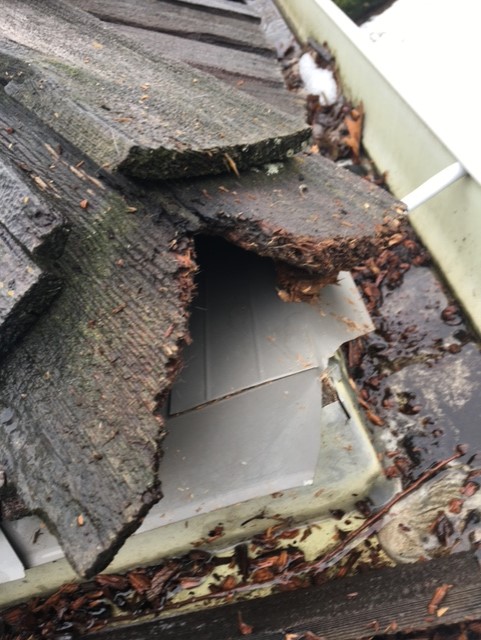
Step 1: Inspection
If an entry point allows and there are no babies present, we will utilize a one-way door in order to allow squirrels present in the attic to leave the property safely. If babies are present, we will live trap the momma, hand remove the babies, and release them into the wild. If momma is not present, our Wildlife Specialists will reach out to local wildlife rehabilitation centers to seek help for the babies.
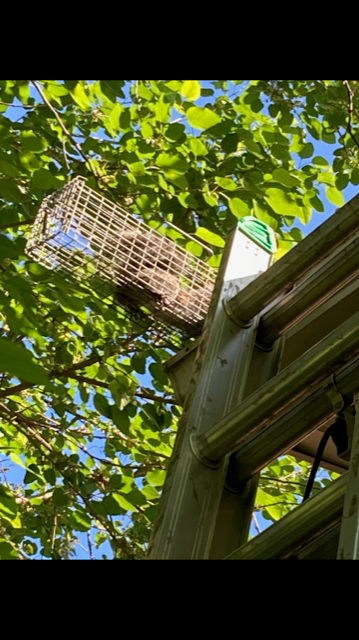
Step 2: Squirrel Removal
One-way door is the safest method of squirrel removal. It will allow squirrels to exit your home, but not re-enter. In order to use a one way-door, you must first locate all the entry points that the squirrels are using. Then you must securely install the one-way door to ensure there are no gaps around the one-way door.
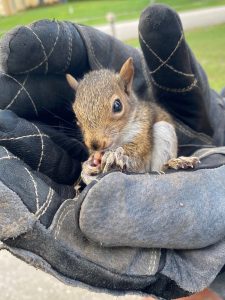
Step 2a: Squirrel Trapping
If a one-way door is not successful or if there are babies present, using box traps with bait is an effective method to remove squirrels from your attic. Squirrel traps can be securely placed on a roof, in an attic, or on the ground. Choosing a location on the ground may lead to catching non-target squirrels. When using live traps, it is important to thoroughly inspect the attic before sealing entry points even if a squirrel(s) was caught because you need to ensure you caught all target squirrels.
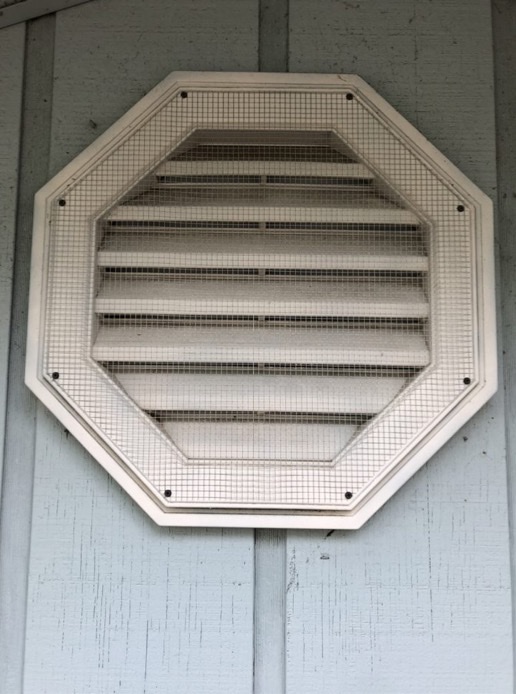
Step 3: Exclusion Repairs
Exclusion repairs seal all current and potential entry points with materials that prevent squirrels from reentering your attic. Sheet metal and 1/4 inch hardware cloth are sturdy enough to stop a squirrel.

Step 4: Sanitization and Deodorization
Trutech Wildlife Specialists apply sanitization agents to reduce the number of germs and pathogens introduced by squirrels. We also clean up feces and replace soiled insulation.

Step 5: Protect and Prevent
Trutech Wildlife Specialists guarantees your satisfaction. Whole home exclusions come with a one-year warranty. Trutech offers recurring programs to safely and humanely keep squirrels from causing a problem on your property. At the time of each service, we thoroughly inspect a property for any new damage or openings.
Squirrels can be very persistent. They are rodents, and they constantly need to chew in order to keep their teeth trimmed. Squirrels can chew through materials like wood, aluminum, plastic, and drywall. For this reason, it is important to maintain a squirrel-free home even after properly sealing a property. For a guaranteed, peace of mind solution, speak with a Trutech Wildlife Professional today.


